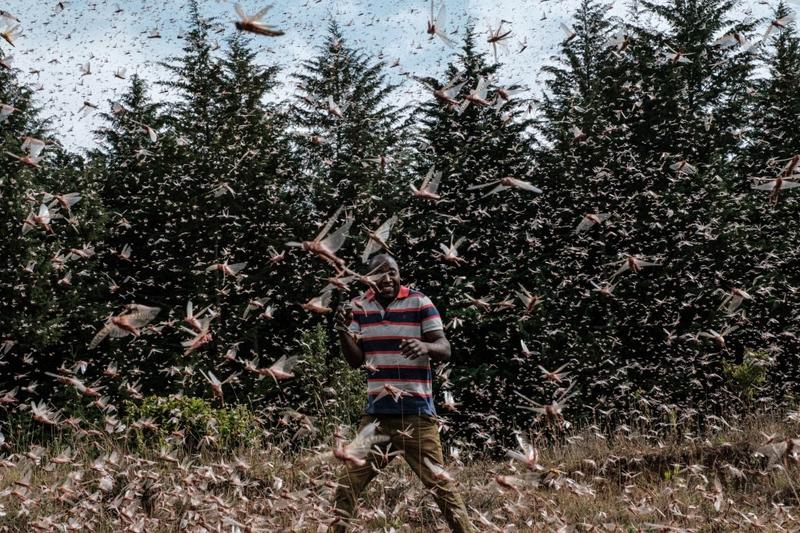 This photo taken on Feb 9, 2021, shows a local farmer walking in a swarm of desert locust in Meru, Kenya. (YASUYOSHI CHIBA / AFP)
This photo taken on Feb 9, 2021, shows a local farmer walking in a swarm of desert locust in Meru, Kenya. (YASUYOSHI CHIBA / AFP)
A UN agency has warned of more difficulties in East Africa's long-running battle against desert locusts.
The Food and Agriculture Organization said immature swarms of the crop-eating insects are slowly forming as a result of breeding in Somalia's northeast, with hopper bands persisting near the coast. The agency said at least one immature swarm was also seen on an escarpment in the country's northwest coast.
"More swarms are expected to form this month in both areas and disperse along the northern plateau, drifting west toward Aysha district in eastern Ethiopia," the FAO said in a recent statement. "In Kenya, numerous small immature swarms persist in northern and central counties.
While swarms arriving from Ethiopia and Somalia have declined, the highly mobile swarms present in Kenya are often seen many times, leading to multiple reports of the same swarm.
The Food and Agriculture Organization
"While swarms arriving from Ethiopia and Somalia have declined, the highly mobile swarms present in Kenya are often seen many times, leading to multiple reports of the same swarm."
ALSO READ: Ethiopia plans more control measures to combat new locust swarms
According to the FAO update, immature swarms persist in Ethiopia's Oromia region, including southern areas of the Rift Valley.
"Intensive ground and aerial control operations continue to make good progress in reducing the number of swarms in Kenya and Ethiopia, especially in the absence of significant rains that are required for maturation and breeding," the UN agency said.
In Sudan, adult locusts are forming small immature swarms on the southern coast of the Red Sea while small adult groups are forming in adjacent areas of Eritrea.
The desert locust is among the most destructive migratory pests in the world. According to the FAO, a swarm covering 1 square kilometer can consume the equivalent of food for 35,000 people in one day.
READ MORE: Swarms of locusts devastate parts of northern Kenya
Previous infestations have destroyed hundreds of square kilometers of vegetation in Ethiopia, with similar damage in Somalia.
Kenyan government spokesman Cyrus Oguna said much has been done to control the pests.


